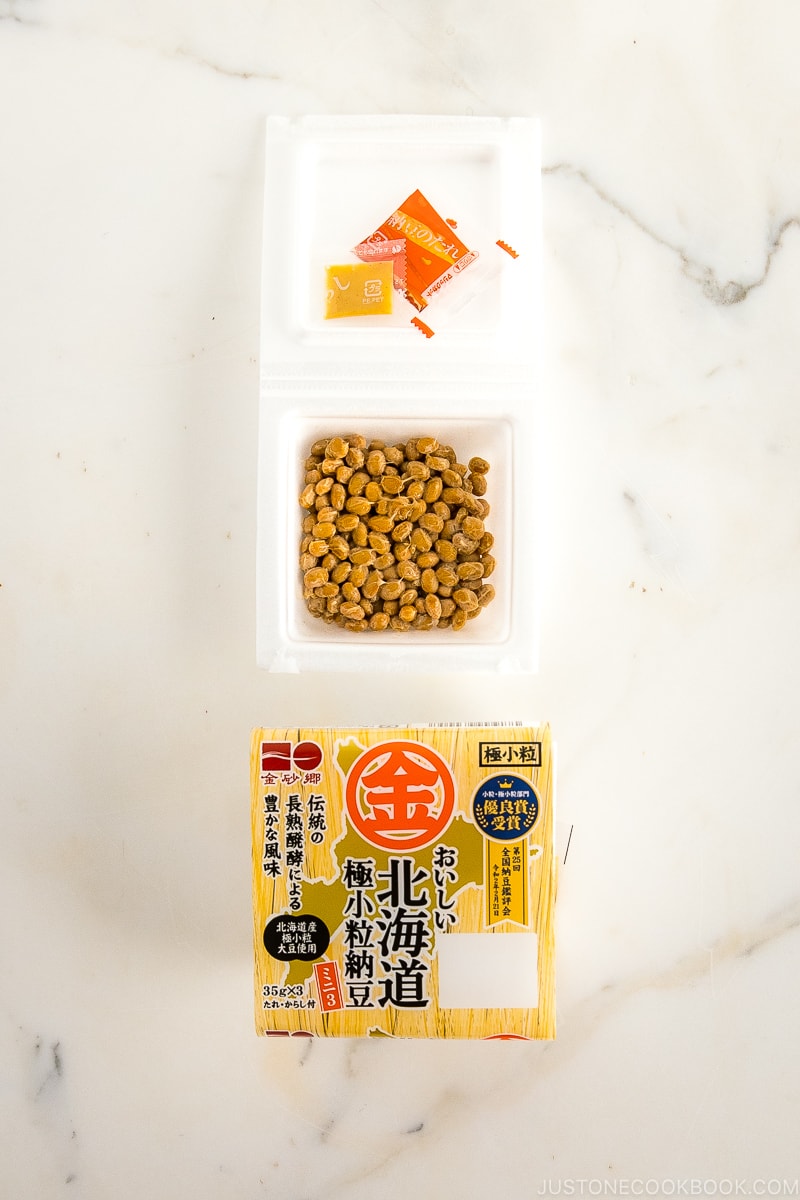Interested in incorporating natto into your meals? Let us share with you a few quick facts about this traditional Japanese dish in this pantry post.
Nattō is a traditional Japanese dish made from fermented soybeans. It is notoriously known for its distinctive, pungent aroma and a sticky, slimy texture, which might initially deter the uninitiated. However, its unique flavor profile and numerous health benefits have made it a staple in Japanese diets for centuries.
How Natto is Made

To make natto, soybeans are selected, cleaned, and soaked to soften. After steaming, they’re mixed with Bacillus subtilis, a fermenting bacterium, and left to incubate in a warm environment for up to 24 hours. During fermentation, the beans develop a characteristic sticky texture and robust aroma.
Once fermented, the nattō is aged for a few days to enhance its flavor before packaging. This intricate process yields a unique superfood rich in protein, fiber, and probiotics, prized by many in Japan for its health benefits and distinctive taste.
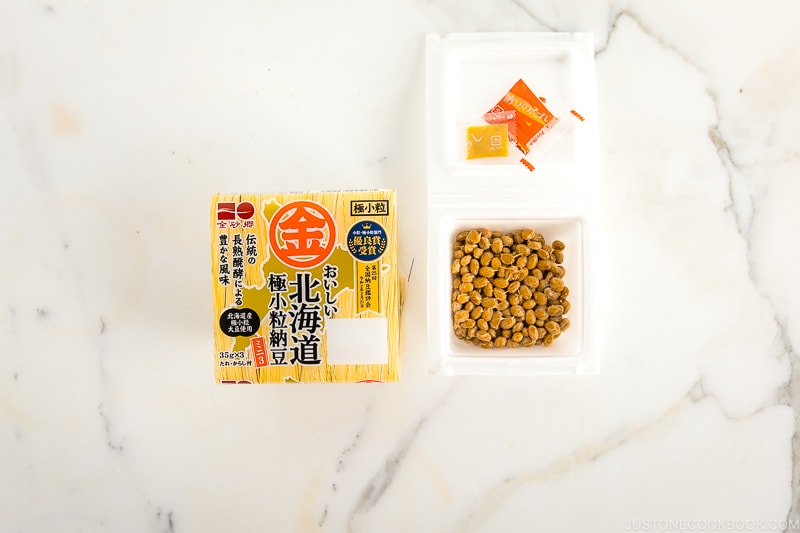
What Does Natto Taste Like
Many people have their own ways of describing this very special food, but in general, natto has a sticky, slimy texture, a pungent odor akin to runny cheese, and a nutty, bean-like flavor.
How To Eat Natto
Typically, the Japanese eat natto as breakfast or as part of an ichiju sansai meal. When you buy natto from the store, the containers usually come with a small packet of tare (sauce) and a small packet of karashi (mustard).
Stir the contents well once you open the package, similar to whipping eggs. Stirring incorporates air, which makes it fluffy and airy. It also enhances the umami content by releasing glutamate in the culture.
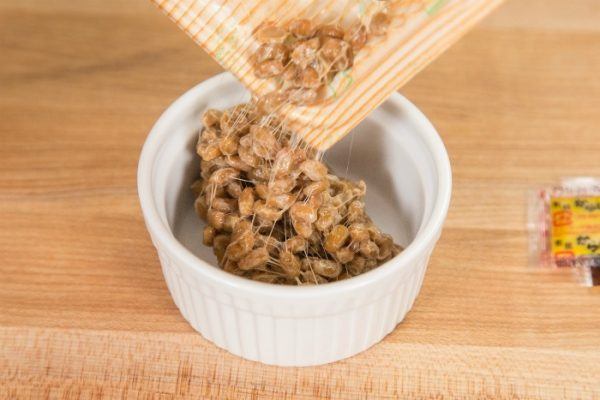
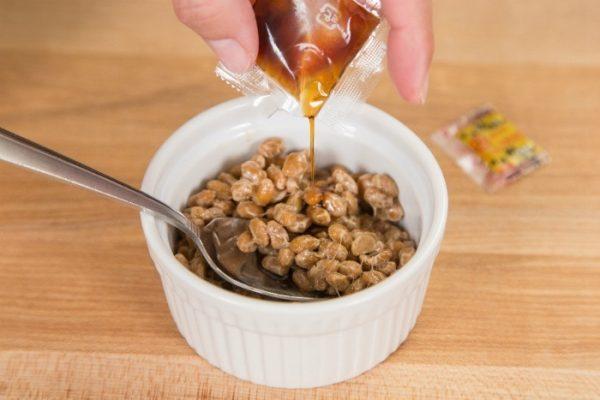

Other Delicious Ideas to Enjoy Natto
You can definitely try mixing other ingredients with natto to make it more palatable, thereby helping to mask and improve its flavor and texture.
- Chopped kimchi
- Tsukemono (Japanese pickles)
- Scallions
- Poached or raw egg
- Other similarly slimy ingredients, such as okra and nagaimo
- Seaweed such as shredded nori or aonori
- Umeboshi or neri-ume
- Cubed avocado
- Black pepper and salt
Where To Buy
You can find natto in the refrigerated or frozen section of a Japanese or Asian grocery store.
We came across NYrture Food, an artisanal natto maker based in New York that ships nationwide. You can also find their natto being sold at various retail stores across the country.
How To Choose The Best
Depending on your grocery store selection, you may be able to find natto made of organic beans or grown in Japan. Look for the Japanese character “有機”, which means organic, on the package. Most are made from soybeans grown outside Japan, such as in Brazil, the U.S., or Canada, and then produced in Japan.
If you don’t like the seasoning sauce that comes with the package (which typically contains artificial sweeteners and MSG), you can use dashi soy sauce or regular soy sauce instead.
Natto Varieties
There are two main types of natto, and you can find them outside of Japan as well.
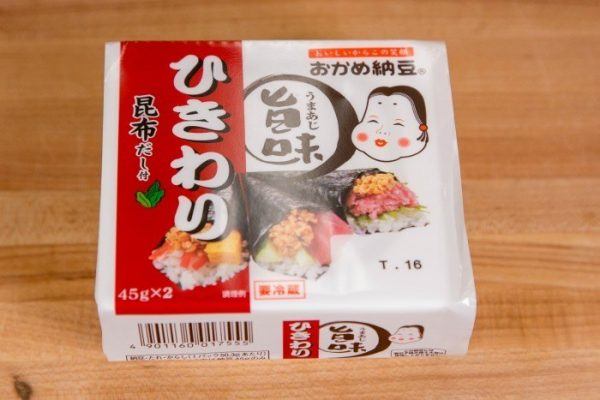
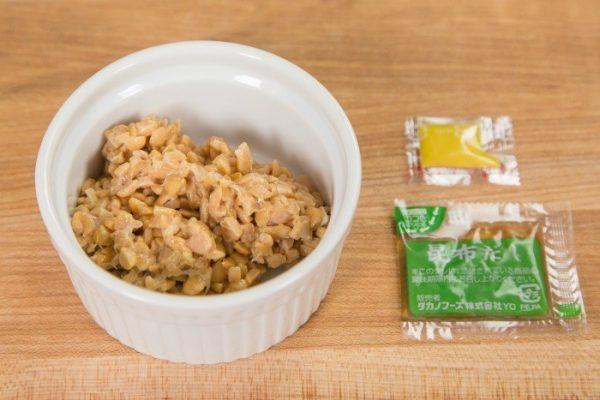
- Hikiwari Natto (ひきわり納豆) – It is chopped and made by cracking and milling the soybeans, removing the skin, then fermenting. The texture differs from that of whole beans and is easier to eat in sushi rolls. It also has a milder taste. Hikiwari natto may be easier to introduce to babies and toddlers as it’s easier to digest. There’s no difference in protein and fiber content, but it’s slightly higher in vitamin K than the regular kind.
- Ootsubu Natto (大粒納豆) – It is made with bigger soybeans and has a more pungent taste and texture.
How To Store
In Japan, natto is sold in the refrigerator section. After purchase, it’s best to enjoy it within 7 to 10 days.
Outside Japan, natto is typically sold frozen. Store it in the freezer until you’re ready to use it. When you’re ready to eat, thaw in the refrigerator overnight and enjoy within 3 to 5 days for the best flavor and quality.


